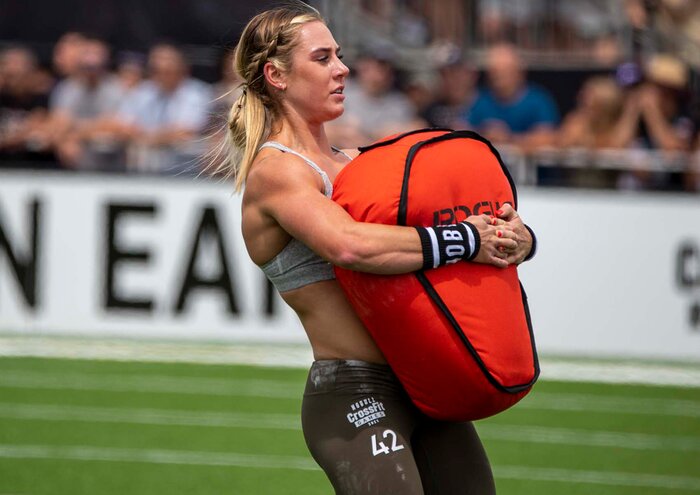Understanding the Risks of Drowning in CrossFit

CrossFit workouts often incorporate water-based activities, which can present unique challenges and increase the risk of drowning. Understanding the physiological factors that contribute to drowning, the specific risks associated with CrossFit workouts in water, and the role of individual factors in determining risk is crucial for ensuring safety.
Physiological Factors Contributing to Drowning
Panic, exhaustion, and cold water shock are physiological factors that can significantly increase the risk of drowning.
- Panic: When a person finds themselves in water beyond their depth, the initial instinct is often panic. This can lead to rapid, uncontrolled movements, making it difficult to stay afloat or call for help. Panic also consumes energy, leading to exhaustion more quickly.
- Exhaustion: Even strong swimmers can become exhausted, especially when performing demanding CrossFit workouts in water. Exhaustion impairs judgment, reduces coordination, and decreases the ability to stay afloat.
- Cold Water Shock: Cold water can cause a sudden involuntary gasp, followed by rapid breathing and a surge of adrenaline. This can lead to hyperventilation, making it difficult to control breathing and stay afloat. Cold water also reduces muscle strength and coordination, further increasing the risk of drowning.
Risks Associated with CrossFit Workouts in Water
CrossFit workouts involving water often combine intense physical activity with potentially hazardous conditions.
- Heavy Lifting: Lifting heavy weights in water can increase the risk of muscle fatigue and exhaustion, making it more challenging to stay afloat if a person falls in. The added resistance of water can also lead to unexpected movements, increasing the risk of injury.
- High-Intensity Movements: CrossFit workouts often involve high-intensity movements, such as sprints, jumps, and throws. These activities can lead to muscle fatigue and breathlessness, increasing the risk of falling into the water and being unable to recover.
- Potential for Injury: CrossFit workouts can involve a high risk of injury, especially when performed in water. Slips, falls, and collisions with equipment can all contribute to the risk of drowning. For example, during a box jump in a pool, a participant could misjudge the height of the box and fall into the water, potentially injuring themselves and becoming disoriented.
Fitness Level, Experience, and Individual Health Conditions
A person’s fitness level, experience in water, and individual health conditions play a significant role in determining their risk of drowning.
- Fitness Level: While a high level of fitness is beneficial, it does not guarantee safety in water. Exhaustion can occur quickly, even for experienced athletes, especially during high-intensity CrossFit workouts.
- Experience: Swimmers with extensive experience in water are generally at lower risk of drowning. However, even experienced swimmers can face challenges in unfamiliar environments or when performing strenuous activities.
- Individual Health Conditions: Individuals with pre-existing medical conditions, such as heart problems, asthma, or epilepsy, may be at increased risk of drowning. These conditions can impair a person’s ability to swim or respond to emergencies.
Prevention and Mitigation Strategies: Drowning Crossfit Games

Preventing drowning in CrossFit workouts requires a multifaceted approach that prioritizes safety, awareness, and preparedness. This section explores best practices for conducting safe water-based CrossFit workouts, emphasizing the importance of proper training, equipment, and supervision. It also delves into pre-workout assessments, participant screening, and the role of emergency preparedness and response plans in minimizing the risk of drowning.
Safe Water-Based CrossFit Workouts
Safe water-based CrossFit workouts demand careful planning and execution. This involves implementing best practices for training, equipment, and supervision.
- Proper Training: All coaches and instructors involved in water-based CrossFit workouts should possess the necessary qualifications and certifications in water safety, lifeguarding, and first aid. They should also undergo regular training updates to ensure they are equipped with the latest knowledge and skills.
- Appropriate Equipment: The use of appropriate equipment is crucial for safety in water-based CrossFit workouts. This includes using life jackets for all participants who are not strong swimmers, employing safety buoys, and having readily available rescue equipment like rescue tubes and throw ropes.
- Adequate Supervision: Maintaining adequate supervision is paramount. A designated lifeguard should always be present during water-based workouts, and the ratio of lifeguards to participants should be appropriate for the size and complexity of the workout.
Pre-Workout Assessments and Participant Screening, Drowning crossfit games
Pre-workout assessments and participant screening play a vital role in identifying potential risks and ensuring the safety of all individuals participating in water-based CrossFit workouts.
- Swimming Ability: Participants should be assessed for their swimming abilities, and those who are not strong swimmers should be required to wear life jackets or participate in shallow water activities.
- Medical Conditions: Participants should be screened for any pre-existing medical conditions that might increase their risk of drowning, such as heart conditions, epilepsy, or respiratory issues.
Emergency Preparedness and Response Plans
Having a well-defined emergency preparedness and response plan is crucial for handling any unexpected incidents that may occur during water-based CrossFit workouts.
- Emergency Contact Information: All participants should provide their emergency contact information, including phone numbers and medical conditions, to ensure prompt assistance can be provided in case of an emergency.
- Emergency Response Team: A designated emergency response team should be trained and equipped to handle potential drowning incidents. This team should be familiar with the facility’s layout, the location of emergency equipment, and the procedures for calling emergency services.
- First Aid and CPR: All coaches, instructors, and lifeguards should be certified in first aid and CPR, and they should be able to administer these services effectively in case of an emergency.
Drowning crossfit games – Drowning incidents in CrossFit competitions, though rare, underscore the importance of water safety training and awareness. A tragic example of this occurred in 2023, when Lazar Dukic drowned during a CrossFit competition. While Dukic’s death was an isolated event, it serves as a stark reminder of the potential dangers associated with water-based CrossFit challenges, highlighting the need for robust safety protocols and vigilant supervision.
Drowning incidents during CrossFit competitions, though rare, highlight the importance of water safety and proper training protocols. A tragic example occurred in 2023, when Lazar Dukic, a prominent CrossFit athlete, drowned during a workout involving water. This incident underscores the need for comprehensive safety measures, including experienced lifeguards, appropriate water conditions, and athlete awareness, to prevent such tragedies in future CrossFit events.
